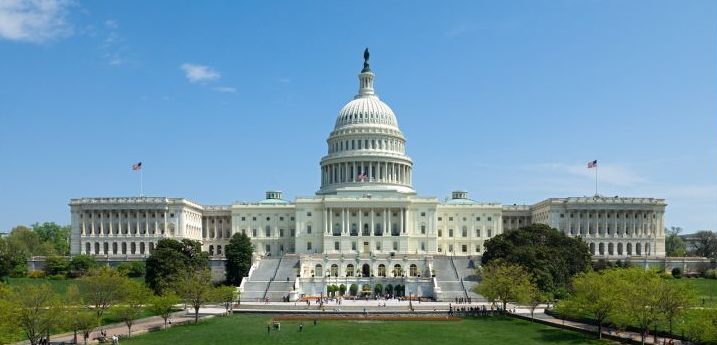A joint investigative report in July from the Toronto Star and The Narwhal concluded that “Ontario developers have spent nearly $173 million scooping up hundreds of acres in the former Greenbelt this summer, months after the Ford government reneged on its promise to protect the environmentally sensitive land.”
Why is the Greenbelt so important?
The Greenbelt, created in 2005, is a protected area of green space, farmland, forests, wetlands, and watersheds, located in Southern Ontario. It is the world’s largest, permanently protected greenbelt. space. It surrounds a significant portion of the Golden Horseshoe, one of the fastest growing regions in North America. It is forecast that up to 13.5 million people will be living there by 2041, thus making it important to protect natural resources in the area.
The Greenbelt was designed to prevent further loss of farmland and natural heritage, restrict urban sprawl and to develop a growth plan that would involve having vibrant communities where people can live, work, and play. The Greenbelt safeguards the vital resources that clean the air and water, reduces flood risks, provides a home for wildlife, and ensures that communities have nearby green spaces to explore and relax. The health of the Greenbelt affects the quality of drinking water for more than seven million Canadians. Irreplaceable natural assets make the region more climate resilient while the Greenbelt’s forests, wetlands, and soils slow the impact of climate change by absorbing carbon dioxide in the atmosphere.
From “we won’t touch the greenbelt” to “it’s a field with a bunch of weeds”
During the 2018 election campaign, Ford was caught on video promising a group of wealthy developers that he would open up a “big chunk” of Ontario’s Greenbelt with the obvious implication that he was making private deals with developers to open up the area for housing development. In fact, Ford admitted that the idea came not from him but the developers. Isn’t that how lobbying works? There was a major public outcry when the video became public, one member of Ontario’s legislature accusing Ford of wanting to “bulldoze a great swath of the Greenbelt and turn it into the largest condo farm this province has ever seen.” The public outcry, much of it from Tory voters, quickly forced him into retracting his words, saying that the Greenbelt was safe in his hands.
Ford’s views have “evolved” from May 2018 when he promised “Unequivocally, we won’t touch the Greenbelt. I’ve heard it loud and clear; people don’t want me touching the Greenbelt,” to April 2023, “One piece of field … had housing all around all four corners — in an empty field with weeds in it. They call that the Greenbelt? That’s not the Greenbelt. That’s just a field with a bunch of weeds.”
The heist in action
In fall 2022, the Ontario government removed protection from 7,400 acres of Greenbelt land in a move that Ford said would allow the construction of 50,000 homes. In exchange, 9,400 acres of land elsewhere, that is already under some form of protection will be added to the Greenbelt’s two million acres.
The Star and The Narwhal found that companies that included Silvio DeGasperis as a director owned 24 properties that benefited from the removal of Greenbelt protection. This land, adding up to over 1,300 acres, were mostly purchased in 2003 — with another lot added in 2004 and two more in 2016 — at a total cost total of $8.6 million. The investigation found that the DeGasperis family, companies and senior staff donated at least $294,000 to Ontario’s Conservative party since 2014. (To cover their bases, they also donated $19,000 to other parties at the same time.)
The recent purchases show that the price of the land has soared once speculators can get rich off the removal of Greenbelt protection. A company purchased 106 acres of Greenbelt in 2020 for $7.9 million, about $85,000 per acre when adjusting for inflation. Since the removal of the protections, White Cherry Developments bought 82 acres for $29.5 million, around $357,000 an acre, an increase of over four times in three years! Developers’ willingness to pay higher prices now to acquire more land in the area shows they are certain that there is a pot of gold at the end of this rainbow.
The Auditor General’s report
On August 9, Ontario’s Auditor General (AG) released a 95-page report outlining how the government’s process for choosing protected Greenbelt land to open up for housing development was heavily influenced by a small group of well-connected developers who now stand to make billions of dollars. A damning report at the very least, but not surprising to anyone paying attention to the last five years of scandals surrounding this government. The report appears to offer a sacrificial lamb in the form of Ryan Amato, who recently resigned as the Chief of Staff to the Housing Minister. Amato received emails from a lawyer representing multiple land developers as well as a dossier containing information on certain land which was included in the rezoning. The report states that 92 percent of the land deregulated were parcels owned by developers who dined with Amato at a building industry event. While the Ford government may attempt to allow Amato to be the fall guy, the people need to hold Doug Ford accountable. The buck stops with him! Ford has tried to distance himself from the developers, but he and developers go way back — many of them attended his daughter’s stag and doe (pre-wedding party) last summer, paying $150/ticket to the event. The corruption runs straight from the top in this latest scandal.
Can stealing from the Greenbelt solve the housing problem?
Ford’s reaction to the AG report was to admit that the process should have been better, but he claimed that “No one had preferential treatment. What we are doing is trying to build 50,000 homes for people that need it.” He is trying to convince the public that building on “unused” land is performing a social service by attacking the housing crisis in Ontario. A recent developer’s brochure advertising the value of the land for sale once it had been removal from the Greenbelt had this to say, “This offering represents an outstanding opportunity to introduce meaningful housing stock at scale to a supply constrained market.” By “meaningful housing stock” the speculators mean building million-dollar or more, single family, car dependent homes in suburban cloisters that have nothing to with tackling the housing affordability crisis.
The problem is not that new land is needed to build new homes. CBC News reported in March that “Ontario has more than 1.25 million potential new homes already in the development pipeline — it just needs to figure out how to convince builders to get shovels in the ground, say experts who manage planning in cities across Ontario.” It goes on: “The report starts to tell the story that the housing supply challenge isn’t really a land supply or development approval problem. The bigger problem is, probably, how do you compel a developer to build? How do you increase the rate of construction?” For socialists, the answer to that question is simple — remove the market from the equation, and nationalize the developers, the big construction companies and the banks. Once a municipality has gone through all the procedures of public consultation and technical approval, there should be no hanging around while the developers dither over market susceptibilities or calculating their likely return on investment. Instead, it should go straight to putting shovels in the ground. The chair of Regional Planning Commissioners of Ontario, Thom Hunt, said, “The takeaway from this is that you don’t need to do urban boundary expansions for the most part and you certainly don’t need to go into the Greenbelt area.” This has been confirmed by a report that Ontario has enough land for two million new homes without touching the Greenbelt.
A different road
Successfully providing housing has been done in Canada and around the world. Greg Suttor argues convincingly that “affordable housing is not about intrepid local groups doing a project here or there, with disjointed layers of public funding at different periods. It’s about implementing policies to sustain a system of capital funding, mortgages, and rent subsidies (plus support services for people with disabilities) on a scale that makes a difference.” He points out that between 1965 and 1990, around 10 percent of total housing production was non-profit, public or co-operative. This was sufficient to house half the lowest-income segment of new households added in Canada each year.
Social housing alone averaged around 20,000 units a year between 1972 and 1992. After that, the federal Liberal government cuts stopped supporting social housing and new building came to virtual stop. If Canada had continued at that rate over the last 30 years, there would be an additional 600,000 units of social housing.
These homes also gave people with low incomes decent options in the same neighbourhoods as middle-class Canadians lived in, and homelessness was almost non-existent.
Affordability for housing means what exactly?
The Canadian Mortgage and Housing Corporation considers the measure of housing affordability as 30 percent or less of a household or person’s average income going towards rent. The last time housing was affordable was in 2003 and 2004. Around then, a household with average income would have had to devote close to 40 percent of their disposable income to buy an average house in Ontario. In 2021 that figure had moved up to 60 percent.
Ontario’s minimum wage of $15.50 falls well below the actual wage of $27.54 needed to rent a one-bedroom apartment and the calculated $33.19 wage needed to rent a two-bedroom apartment. The lack of affordable housing is due to low wages, failure to build social housing, and high mortgage interest rates and soaring rents due to a lack of strong rent controls. It has next to nothing to do with needing new land to building new homes. The solution is two pronged — workers need more income to buy a home and more homes need to be built, efficiently and cheaply. Eliminating capitalism and introducing democratic socialist planning is the way to go.
The real tragedy of the commons
None of this is new. The 17th Century folk poem referred to the English enclosure movement — the process of excluding people from common land and turning it into private property. Today, the goose can be imagined as representing skyrocketing grocery prices but the villain who “steals” the commons certainly remains the same.
The law locks up the man or woman
Who steals the goose off the common
But leaves the greater villain loose
Who steals the common from the goose.




